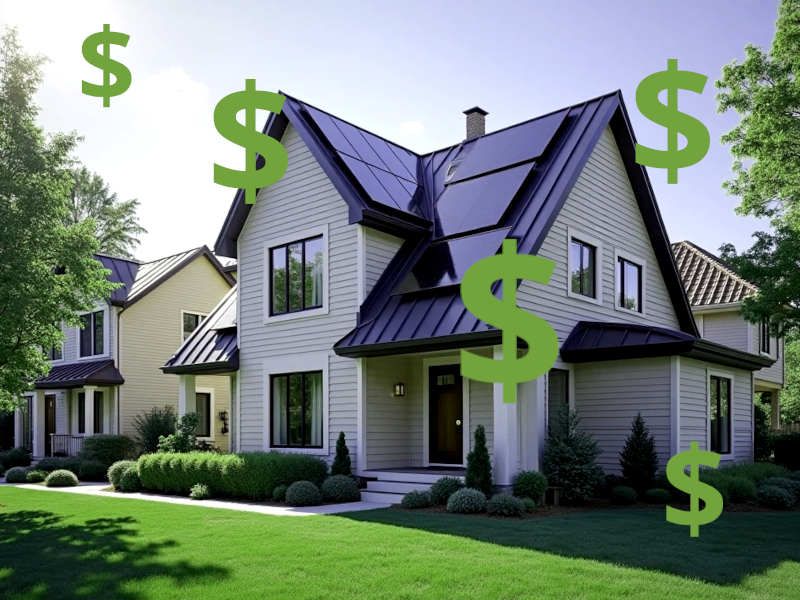The True Cost of Solar Panel Installation: Pros, Cons, and ROI for Homeowners

4 minute read time
Table of Contents
Solar panels are no longer just for the eco-conscious or gadget-loving neighbor. They’ve become a practical choice for anyone looking to save money on energy bills while reducing their carbon footprint. But before you jump in, it’s essential to understand the costs, benefits, and potential return on investment (ROI). Let’s break it all down. Read on to find the true cost of solar panel installation, highlighting average prices, key components, and available incentives like tax credits and net metering. Below I discusses the ROI, including payback periods and potential savings, while outlining the pros (financial and environmental benefits) and cons (high initial costs and maintenance) including real-world examples and practical tips help homeowners decide if solar is right for them.
Understanding Solar Panel Installation Costs
Average Installation Costs by System Size
Solar panel systems come in small, medium, and large sizes, with costs ranging from $10,000 to $30,000 for a typical home. System size depends on your energy needs, and larger systems generate more power (and savings). For instance, a smaller 4-kilowatt system may cost around $12,000, while a larger 10-kilowatt setup can exceed $25,000.
Components of the Total Cost
When you see the price tag, know it covers several components:
- Equipment: Solar panels, inverters, mounting systems, and optional batteries.
- Labor: Professional installation fees to ensure everything is set up correctly (and won’t slide off your roof during a storm).
- Permits and Inspections: Local government fees for required permits and inspections.
These costs can vary depending on your home, roof design, and chosen equipment.
Financial Incentives and Tax Benefits
Federal Tax Credits
The Federal Investment Tax Credit (ITC) allows homeowners to deduct 30% of their solar system cost from their taxes. For a $20,000 system, this credit could save you $6,000.
State and Local Incentives
Many states offer rebates and credits to reduce upfront costs. For example, California has incentives through its solar initiative programs, while other states may offer property tax exemptions.
Net Metering and SRECs
Net metering lets you sell excess energy your panels generate back to the grid, earning credits on your utility bill. Some states also allow you to trade Solar Renewable Energy Credits (SRECs) for additional savings. It’s like having a tiny power plant on your roof that pays you.
Calculating the ROI of Solar Panels
Upfront Costs vs. Long-Term Savings
Most homeowners recoup their investment within 6 to 10 years. After that, it’s mostly savings. For a system costing $20,000, monthly savings of $150 on electricity can amount to $1,800 annually. Over 25 years (the typical lifespan of panels), you could save $45,000 or more.
Variables Impacting ROI
Your ROI depends on:
- Sunlight: Homes in sunny areas like Arizona see faster payback than those in Seattle.
- Electricity Rates: Higher local rates increase savings.
- Maintenance Costs: While solar systems are low-maintenance, occasional cleaning or repairs may be needed.
Pros of Solar Panel Installation
Financial Benefits
Solar panels significantly reduce your electricity bills. Plus, they can increase your home’s resale value by an average of 4%. Buyers love lower utility costs!
Environmental Impact
Solar panels reduce your carbon footprint, cutting greenhouse gas emissions. It’s a small step for your home but a big one for the planet.
Energy Independence
Generating your own electricity means fewer worries about rising energy prices or power outages (especially with a battery backup).
Cons of Solar Panel Installation
High Initial Costs
Solar systems are expensive upfront, even with incentives. Financing options, such as loans or leases, can help spread the cost.
Weather and Geographic Limitations
Homes in cloudy or heavily shaded areas produce less energy. Snow-covered panels? They’re more of a winter decoration until they thaw.
Maintenance and Lifespan
While solar panels are durable, inverters may need replacement every 10–15 years. Cleaning panels occasionally ensures they perform at their best.
Tips for Homeowners Considering Solar
- Evaluate Your Roof: Ensure it’s in good condition and has adequate sunlight exposure.
- Compare Installers: Get multiple quotes and check reviews.
- Use Solar Calculators: Online tools can estimate costs, savings, and payback periods.
The Bottom Line…
Solar panels are a smart investment for homeowners ready to save money, embrace renewable energy, and boost their property value. While upfront costs can feel steep, financial incentives and long-term savings often make the decision worthwhile






